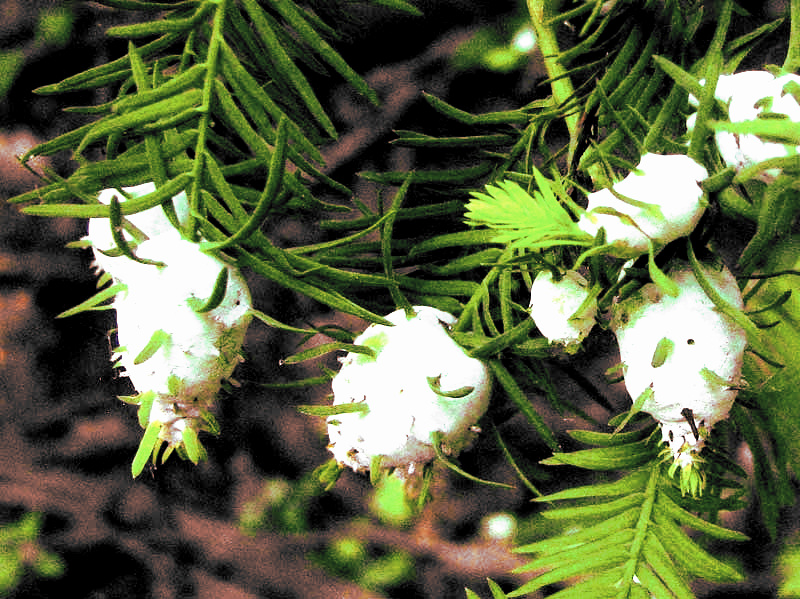Excerpts from Jim Conrad's
Naturalist Newsletter

from the July 1, 2012 Newsletter issued from the woods of the Loess Hill Region a few miles east of Natchez, Mississippi, USA
CYPRESS TWIG GALL
Nowadays the ferny twigs of many Baldcypresses in the swamps of St. Catherine Creek National Wildlife Refuge just south of Natchez are conspicuously adorned with what at a distance looks like thousands of white mothballs. A few -- which are spongy and succulent inside -- are shown up close above.
Searching on the keywords "Baldcypress gall" with the image search feature of a search engine it was easy enough to learn that what we're seeing here is Cypress Twig Galls caused by tiny, transparent-winged flies known as Cypress Twig Gall Midges, TAXODIOMYIA CUPRESSIANANASSA, found where Baldcypresses occur from northern Illinois and Indiana to Florida and western Louisiana.
Galls fallen onto the ground at the end of the growing season provide stable and protective environments as well as food for the midge's overwintering larvae. Large galls may contain 15 or so larvae. Larvae pupate inside the galls in the spring and a few weeks later after feeding on the galls' tissue emerge as winged adults. The adults mate, then on Baldcypress trees the females lays, or "oviposits," an average of 120 brightly orange, translucent eggs, in clusters of about 15 eggs each, during her one- or two-day life span.
The eggs hatch, producing larvae that induce gall formation where they feed on the Baldcypress's branchlets. A gall expands rapidly and the larvae burrow into it, making small chambers for themselves. In our area probably two generations are formed each year. Thus the larva in its chamber may pupate and begin the life cycle all over again, or stay inside the gall as it matures, turns dark and hard, and falls onto the ground, where the larva will emerge the following spring.
A mature gall is shown below:
